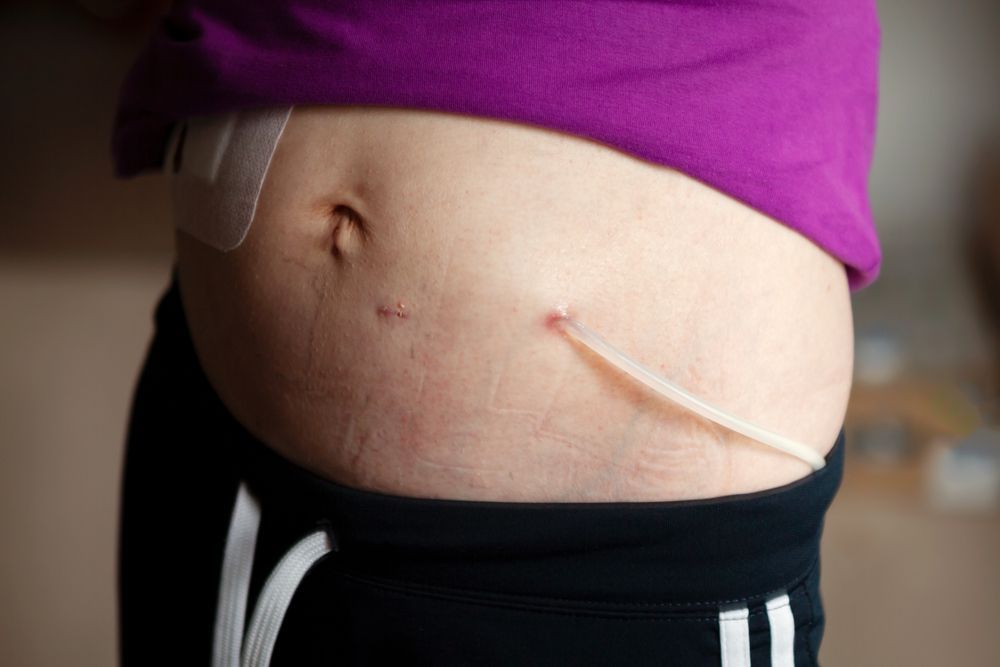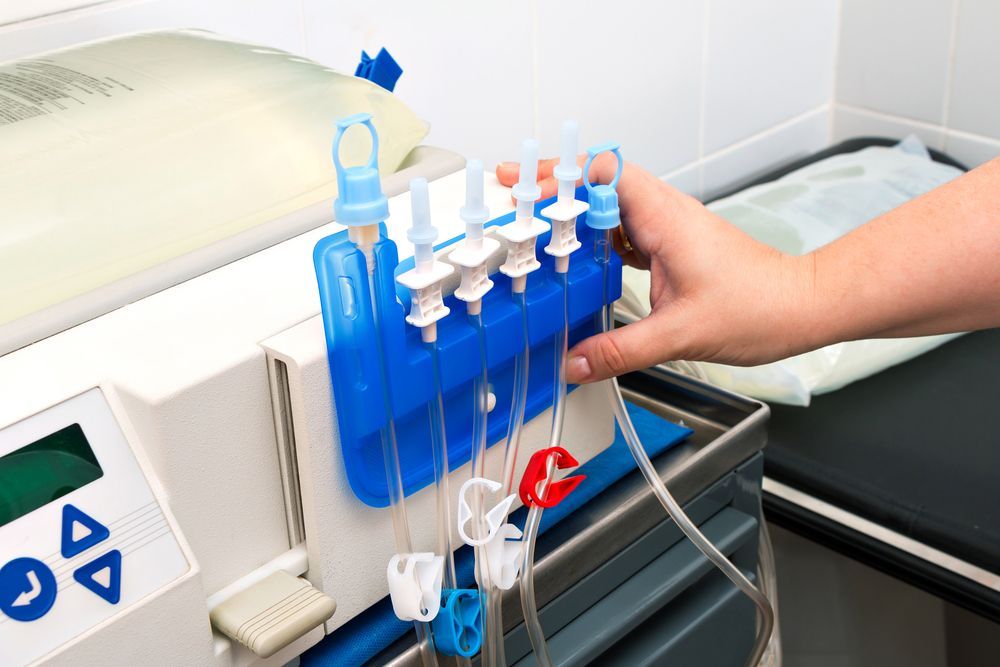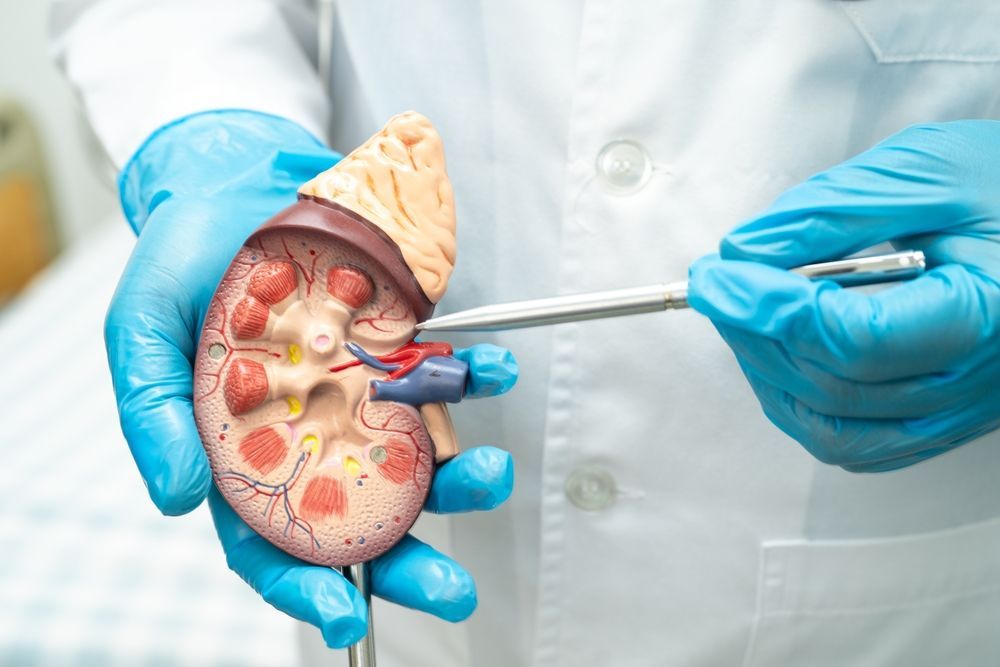Understanding Peritoneal Dialysis: A Patient's Guide
Share this Article:
Written by: Vitality Dialysis

Peritoneal dialysis (PD) is a life-saving treatment for patients with kidney failure (end-stage renal disease). PD involves filling your belly with a sterile fluid that cleans the blood in your abdominal cavity and is then filtered out of your body. You can receive peritoneal dialysis throughout the day, or overnight while you are sleeping. You and your healthcare provider can discuss your options to choose which type of dialysis gives you the best health outcome and enables you to continue living an active life.
What is Peritoneal Dialysis (PD) & What Does it Treat?
Dialysis is necessary for people who are experiencing late-stage chronic kidney disease or total kidney failure. The kidneys are unable to perform the essential function of cleaning and filtering the blood, which is deadly if not treated by dialysis or a kidney transplant. Patients who have end-stage renal failure (kidney failure) need to go on some form of dialysis to survive until they can be matched with a suitable kidney transplant.
There are two major types of dialysis: peritoneal dialysis and hemodialysis. Hemodialysis filters your blood by removing it from your body slowly and passing it through a machine called a dialyzer, which cleans it and replaces vital electrolytes before returning it to your body.
During peritoneal dialysis, a sterile dialysis solution containing water, salt, and other minerals passes from a bag and into your belly through a catheter. The solution uses your abdominal lining (the peritoneum) to help filter wastes, toxins, and excess fluids from your blood while it’s still in your body. Once the bag has drained, you can remove the bag and cap the catheter so that you can continue through your day while the solution cleans your blood.
After a few hours, you need to drain the solution, which is now carrying the wastes and toxins filtered out of your blood, back into the empty bag. The used solution can be flushed down the toilet. Typically, the peritoneal dialysis exchange process needs to be done four to six times daily.
Types of Peritoneal Dialysis
Depending on your lifestyle and recommendations from your kidney doctor (nephrologist), you can do PD during the day as you go about your work and activities, or it can be done overnight with a machine that exchanges the dialysis liquids as you sleep.
Continuous Ambulatory Peritoneal Dialysis (CAPD)
Continuous ambulatory peritoneal dialysis (CAPD) happens all day, and you can move around and engage in normal daily activities while it’s happening because you do not need to be connected to a machine. You need to take some breaks at regular intervals throughout the day to exchange the dialysis fluid bags, but otherwise, you can stay busy and get your to-do list done. Depending on your kidney doctor’s recommendations, you may need to follow through with the bag exchange process four to six times in the day at even intervals, and the process can take about half an hour to 45 minutes. Many patients do their exchanges before or after mealtimes and before bedtime.
Automated Peritoneal Dialysis (APD)
With automated peritoneal dialysis (APD), a machine called an “automated cycler” pumps the dialysis solution into the abdomen and subsequently drains it out. The machine performs the recommended three to five fluid exchanges per session, and it involves being connected to the machine throughout the process. Typically, patients who are on APD do this overnight while they sleep. Sometimes APD is also called “continuous cycling peritoneal dialysis" or CCPD.
Pros & Cons of PD
Peritoneal dialysis is a lifesaver for many patients, but as with any kidney failure treatment, there are pros and cons. You and your nephrologist will need to discuss your condition and
which dialysis option is best for you. Here are some basic pros and cons of peritoneal dialysis you’ll want to discuss with your healthcare provider:
Pros
Peritoneal dialysis and
hemodialysis are both equally effective, proven methods for helping people with kidney failure to live longer, better lives. People on PD can move around more freely throughout their daily activities, can typically eat more, and need fewer medications than those who are on hemodialysis. Some patients prefer the freedom and control PD gives them throughout their lives, reducing some of the stress involved with
receiving dialysis. Many nephrologists (kidney doctors) observe that peritoneal dialysis can enable closer control of fluid amounts, which can place less stress on the heart and circulatory system. It can be a good option for some
late-stage chronic kidney disease patients who have time to prepare surgically to start dialysis.
Cons
Peritoneal dialysis may not be the optimal solution for all patients, however. It is not a good option for patients with obesity or significant scar tissue from previous abdominal surgery. Starting peritoneal dialysis requires additional surgery to place the catheter responsible for exchanging the dialysis fluids as well. All dialysis methods must be performed daily, at regular intervals, but CAPD in particular requires lengthy breaks to switch out fluid bags, dispose of spent fluid, and keep the catheter site clean, so patients often need a lot of training to learn how to do these procedures correctly on their own. Also, preparing for peritoneal dialysis takes extra time and preparation and is not suitable for patients who urgently need to start dialysis immediately. In those urgent cases, nephrologists typically need to start a patient on
hemodialysis, which can also be done at home with proper training and support.
Expected Results of Peritoneal Dialysis
Peritoneal dialysis can significantly improve the quality of life and save the lives of people with kidney failure by performing the blood-filtering and cleaning functions of the kidneys. If, after evaluating your situation, you and your kidney doctor decide that PD is the best choice for you, you should be able to undergo daily dialysis treatments with limited disruptions to your daily life.

How to Prepare for Peritoneal Dialysis
If you are experiencing the symptoms of chronic kidney disease (CKD), discuss the next steps with your primary care provider and your nephrologist. Taking steps during the earlier stages can slow down the progression of CKD so you have more time to evaluate future dialysis options. If you are already in the midst of end-stage renal failure, however, dialysis may need to begin immediately, which can limit your options. Work closely with your healthcare team so that you have as much time as possible to make educated decisions that will give you the best lifespan and quality of life.
If you and your nephrologist decide PD is the right move for you, you will need to follow these steps to prepare:
Surgery
Your kidney doctor will first need to perform minor surgery to place the catheter into your abdominal cavity. One end of the catheter will be exposed to the air, and the other end will be inside of you. Typically, you will not need general anesthesia for this procedure, only localized numbing.
Training
Your doctor and your dialysis support team will then train you on how to correctly perform peritoneal dialysis safely on yourself. You will learn important details such as:
- How to keep the catheter site sterile to prevent infection
- How often and when to perform PD on yourself
- How to store supplies safely so they remain sterile
- How to correctly dispose of used medical supplies
- How to correctly use the automated cycler if you use peritoneal dialysis (APD) overnight
- How to observe yourself for any changes or complications
- How to contact your dialysis support team if you need help
Routine Changes
As you receive support and training to perform PD in the comfort of your own home, you will become an expert in your own care process, which can be liberating and empowering for people waiting for kidney transplants. You will need to set a routine schedule for yourself and stick to it according to your doctor’s instructions to stay healthy, of course. However, you won’t have to travel regularly to a dialysis center, because you can take care of the process in the comfort of your own home, and you’ll have the flexibility to work and engage in typical daily activities.
How Can You Safely Do Peritoneal Dialysis?
Following your doctor’s instructions carefully and paying close attention to the training provided by your home dialysis support team can ensure that your PD sessions are safe and effective and give you the best outcomes and more freedom to live your life the way you want to.
How Long Can You Stay on PD?
If you perform your daily (or nightly) peritoneal dialysis correctly, as instructed by your nephrologist, you can live for many years on dialysis. Although there is no cure for kidney failure,
dialysis can help you live longer and feel better until a kidney transplant is available or for the rest of your life. Following your doctor’s treatment plan, lifestyle recommendations, and dialysis protocols are essential to getting the best quality of life outcomes.
Is PD or Hemodialysis Right for You?
You will need to consider all of your options together with your healthcare provider when deciding whether peritoneal dialysis or hemodialysis is best for you. In either case,
Vitality Dialysis will be there for you, to provide convenient, comfortable, empowering home dialysis training, support, and options.
Contact us today to learn more.
Share with Us!






